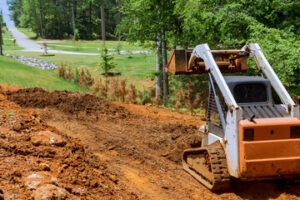Ask each potential contractor for references from past clients with projects similar to yours. Contact these homeowners to determine whether the builders met expectations and completed work within timelines agreed upon.

Building a deck does not have to drain your wallet. In fact, the cost-effective construction of a custom deck is achievable if you follow some simple rules. Contact Deck Builders Lexington KY for professional help.
Your choice of materials can significantly impact the costs of a deck project. Pressure-treated wood, for example, is affordable upfront but requires regular maintenance, whereas composite and PVC options may cost more up front but offer significant savings in the long run due to their durability and low maintenance requirements.
Another important factor is the size of your deck. A larger deck requires more material and labor, which increases the overall cost of construction. The location of your home also impacts costs, as the cost of materials is higher when they are shipped from farther away.
A skilled deck builder can make the most of your budget by reducing the amount of lumber required for the project. They can use picture frames and breaker boards to create a wider deck with fewer boards, thereby lowering your material costs. They can also incorporate a system of pre-built posts and joists to reduce the number of foundational elements needed, allowing for greater flexibility in the design process.
Moreover, it is wise to set aside 10-20% of your total budget for unforeseen expenses. These include permit fees, rental of specialized tools, delivery charges, waste removal costs and professional installation services. Choosing a reputable deck contractor like Reliable can help ensure that all these factors are included in your final cost estimate.
Regulatory Compliance
One of the biggest concerns homeowners have when hiring a contractor is whether or not they will be compliant with local regulations. This is especially important because unpermitted structures can be a huge red flag during the property sale or appraisal process and might not be covered by insurance in the event of damage. Licensed contractors are familiar with local zoning laws and building codes and can guide their clients through the permitting process.
Some examples of local code requirements include:
Deck builders should also abide by building codes regarding the use of materials. For example, they should use durable materials that can stand up to the elements. Additionally, they should ensure that all fasteners are properly secured, and that the ledger board is firmly attached to the house. This is done by using lag screws, through bolts, and proper spacing to ensure that the structure is stable and will not pull away from the house. They should also utilize metal flashing to channel water away from the ledger board and prevent wood rot.
Licensed contractors will typically have established relationships with reputable suppliers, which can guarantee the use of quality materials for your project. This will reduce the risk of substandard materials being used, which could potentially jeopardize the safety and longevity of your new deck.
It’s also a good idea to ask your potential deck builder about their experience and how long they have been in the business. They should be able to provide you with references from past customers and details about their previous projects. They should also be able to give you an estimated completion date and communicate regularly about how the project is progressing.
Peace of Mind
Having a professional on board streamlines the construction process. This ensures that the project will be completed on time and in line with your budget and expectations. Moreover, it ensures that the final product meets all regulatory requirements and is safe to use. A good Deck Builder will also be able to anticipate any issues that may arise during construction and respond accordingly. This way, you won’t have to deal with any headaches or stress during the building process.
If you are searching for a Deck Builder near me, look for one that has an excellent track record and reputation. You should also ask about their warranty options and ensure that they have a contract in place that specifies all project details. Additionally, it is important to ask the contractor if they are licensed in your area. This is crucial, as it ensures that they have the necessary knowledge and experience to complete your project safely and within the law.
A Deck Builder can create a beautiful outdoor space that enhances your home’s curb appeal. It can also increase the value of your property. It can even provide a space for your family to relax and enjoy the outdoors. To make sure that you hire the right contractor, you can search for one online by checking the reviews and past projects they have done. You can also contact the local building associations, which are self policing and help insure that good contractors get work.
Time Savings
The amount of time it takes to build a deck is largely determined by the size and complexity of the project, along with weather conditions. Experienced builders bring expertise and efficiency to the process, minimizing construction delays. They also understand local building codes and permits, ensuring that your deck is in compliance with all regulations.
Aside from reducing the risk of costly errors and delays, hiring professional builders can save you money by speeding up the build process. This is particularly true for complex projects that involve custom features or specialized structures.
If you’re planning to install a custom deck, consider scheduling the work during off-peak times. During peak seasons like spring and summer, contractors are in high demand. This means their rates may be higher, and their schedules busier. On the flip side, off-peak months like late summer, fall, and winter often provide contractors with lighter workloads and may offer lower rates.
The type of material you choose has a significant impact on the upfront cost and long-term maintenance of your deck. For example, pressure-treated wood is an affordable option for budget decks, but it requires regular staining and sealing to prevent rot, mold, and insects. In contrast, composites are more expensive upfront but provide significant savings in the long run due to reduced maintenance needs. Professional builders can help you select the right materials for your needs and budget.
When constructing your deck, make sure you identify your essential needs and wants before creating your budget. Focus on the functional and aesthetic features that are critical to your enjoyment of your outdoor space, and avoid unnecessary upgrades or amenities that can wait until a later date. This will ensure that your final estimate is accurate and helps you stick to a realistic timeline.
Creative Solutions
A deck is the perfect place for entertaining friends and family. But it can also be an important part of a home’s value and aesthetics. Many homeowners put their deck at the top of their wish list when it comes to remodeling. It’s a great way to enjoy the outdoors with loved ones, host a dinner party, or have a cup of coffee on a Sunday morning.
Professional builders have the expertise to turn your vision into a reality. They can create a comprehensive project plan, streamline construction activities, and coordinate all the moving parts of your deck project. This ensures that your deck is completed efficiently and within budget.
Regulatory Compliance
The process of building a deck requires compliance with local regulations, including permit and code requirements. Professional builders are well-versed in local laws, allowing them to navigate the complexities of the process and keep your project on track.
Creative Solutions
Experienced builders bring a wealth of creativity to the table, proposing innovative design elements and practical solutions that will elevate your deck’s aesthetics and functionality. They can propose unique railing designs, built-in seating, and more. They are also adept at optimizing deck layouts for space utilization, ensuring that your deck caters to your desired activities and flow.
They can also help you select the right materials, considering factors like weather resistance and maintenance requirements. They can even advise you on environmentally conscious options, such as using sustainable wood or utilizing energy-efficient lighting.








